As a Tree Expert, I Always Do These 4 Things for Stunning Fall Color on Japanese Maples – and Never Make These 2 Mistakes
If you want to guarantee the most dazzling displays with a Japanese maple in fall, here are 4 key things to do to guarantee success – and 2 things you need to avoid
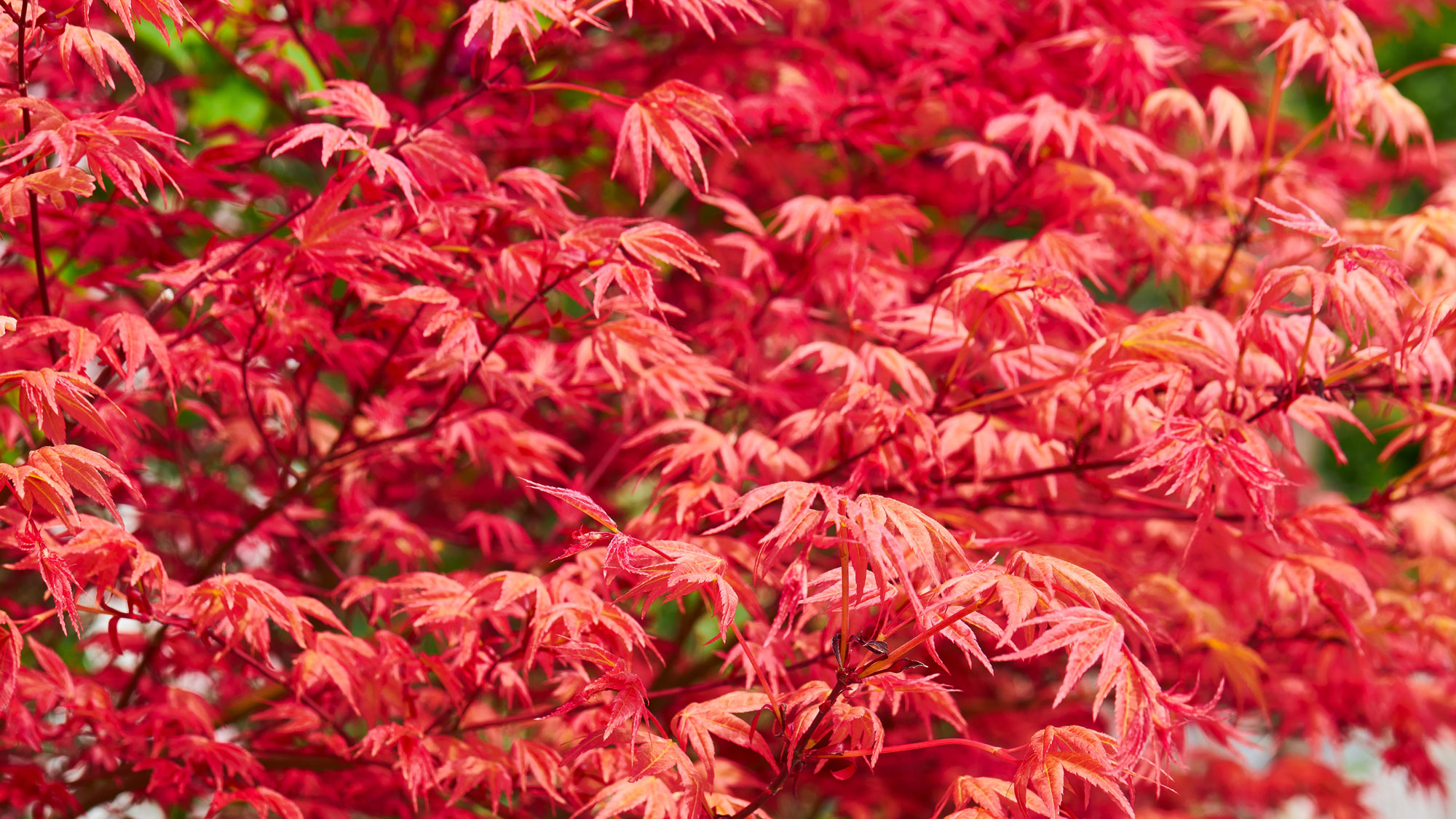

Autumn is the season of fiery leaf displays. Shorter days and cooler temperatures cause trees to stop making chlorophyll, the green pigment responsible for photosynthesis. As the green hue fades, the fiery underlying pigments become visible and the leaves produce anthocyanin pigments to add reds and purples to the mix. Hopefully, you’ll be enjoying these colors in abundance if you are growing a Japanese maple in fall (or possibly more than one!).
While east-coast Americans can admire the fall display of sugar maple trees, the Japanese head to the hills to see the fiery shades of wild Japanese maples, with their delicate leaves and brilliant coloration. This pilgrimage is considered more of a spiritual experience than a fun outing. For those of us who love worshipping our own homegrown Japanese maples, this is a truly special time in the calendar year. However, just to be on the safe side, here are some of my tried-and-tried ways of ensuring more vibrant Japanese maple fall colors.
Boost Color on a Japanese Maple in Fall
Japanese maple trees are gorgeous, but incredibly variable. Individual trees have different leaf-forms, leaf shades and even shapes. Thousands of tree forms are available, with wildly varying Japanese maple fall color. A variety of factors impact autumn color in Japanese trees, including region, growing zone, and soil quality. Obviously, the healthier a Japanese maple tree is, the more vibrant its displays can be. Several factors, including cultural care and environment, will help determine how vibrant and long lasting your fall displays are likely to be.
Fall weather is another important factor in the intensity of Japanese maple fall foliage colors. You can’t directly impact this, of course, but cool weather, sunny days and dry nights are ideal. These conditions accelerate the production of red anthocyanin pigments, which in turn produce those glorious colors. Hot weather, humidity and too little (or too much) rain can all wipe out your chances for great fall color. Unlike other trees, Japanese maples are not heat-loving plants.
Beyond that, though, there are some definite ways to get the most from Japanese maples. Here are a few of my tried-and-true Japanese maple fall color tips to help you get the most dazzling displays on the block.
1. DO Choose the Right Cultivar
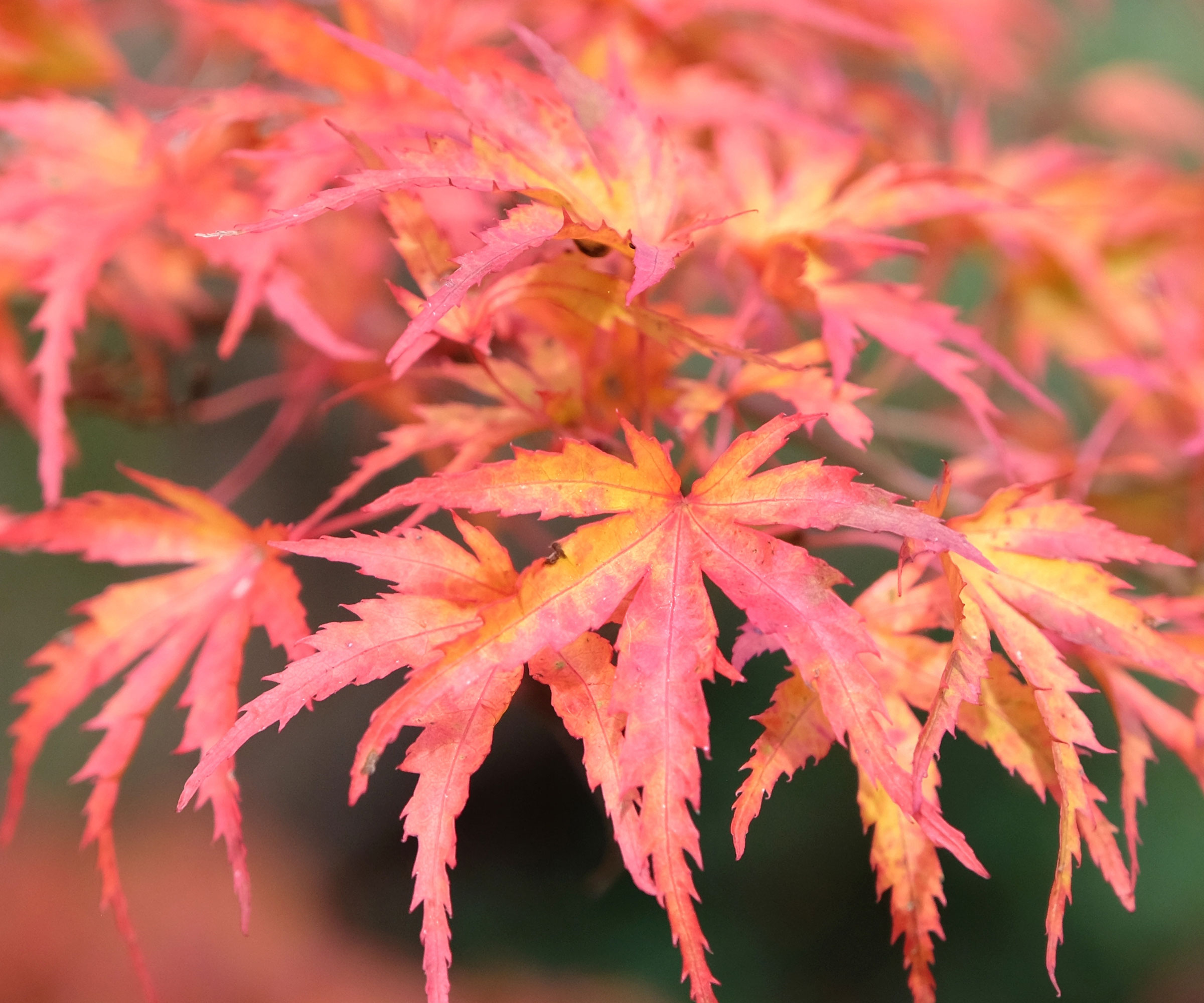
You’ll increase your chances of dazzling Japanese maple fall foliage if you choose a cultivar carefully. Some focus on vibrant reds, while others produce bright oranges or golden tones. They tend to be low maintenance trees, but bear in mind that if you pick a tree that doesn’t match your region’s hardiness zone or climate zone, this could affect the tones you see. Check these before you select a tree. If your maple tree isn’t hardy where you live, it will suffer winter damage and possibly die. No Japanese maple will be healthy in subtropical or tropical areas.
Specific tree forms produce different effects in the garden. Those with upright growth can reach 25 feet (7.6m) tall. They produce palm-shaped leaves. Weeping varieties have lacy foliage. Be sure to choose the form before buying the tree. Both forms offer a wide variety of fall color options. You can find some gorgeous examples by buying Japanese Maples from Nature Hills, but some lovely examples include:
Sign up for the Gardening Know How newsletter today and receive a free copy of our e-book "How to Grow Delicious Tomatoes".
- Bloodgood: Popular upright with deep red foliage all summer long, deepening into crimson in the fall. It grows to 20 feet (6m) tall and wide. You can buy Bloodgood Japanese Acer from Amazon.
- Osakazuki: Another great upright that reaches 20 feet (6m). Its palmate leaves – each with seven lobes – are green in the summer, then bright orange-red in autumn.
- Garnet: A weeping Japanese maple. The lace-leaf foliage starts out as orange-green, then turns purple-green at summer’s end. Come fall, those delicate leaves blaze bright red. It tops out at 12 feet (3.7m).
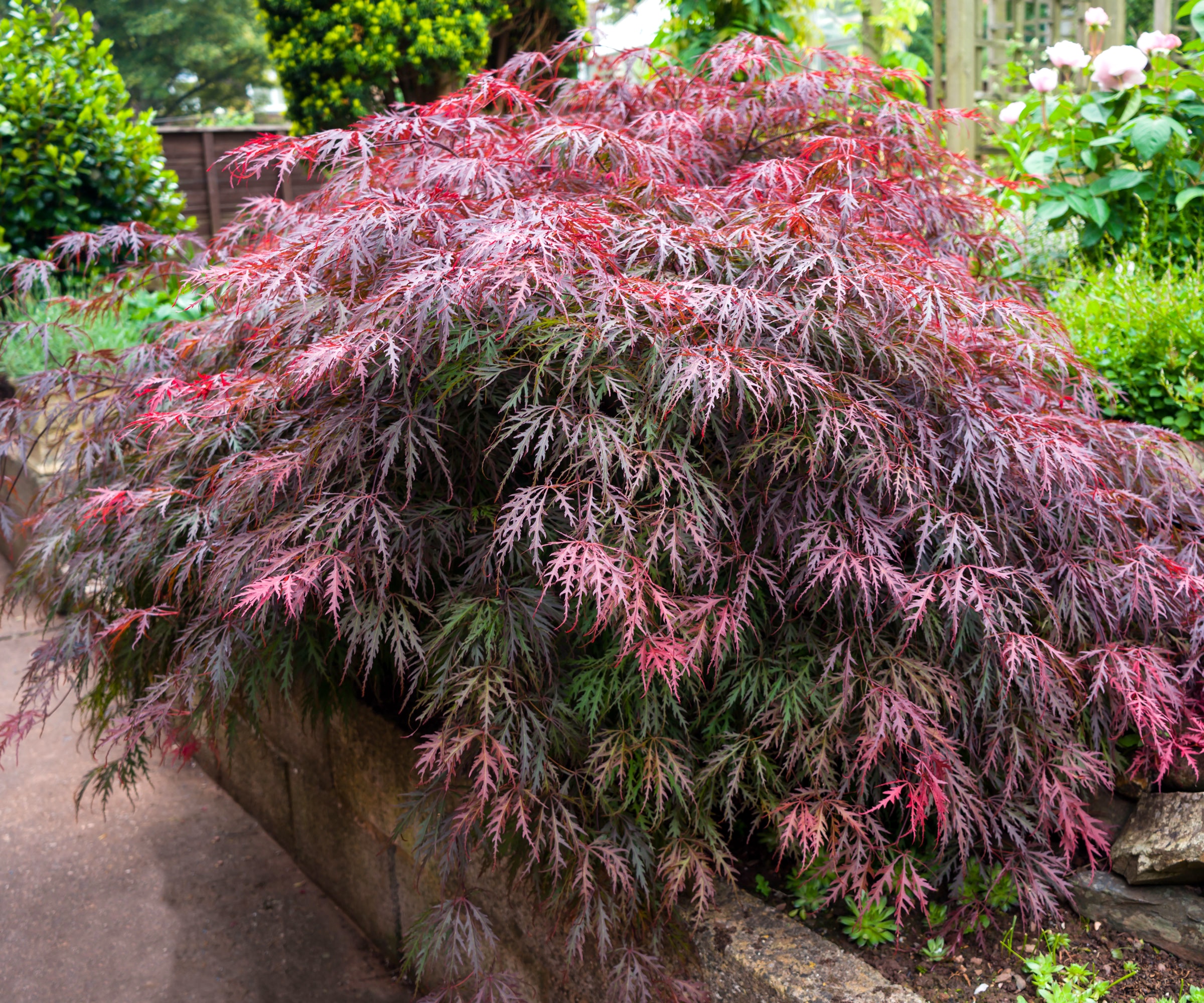
- Autumn Moon: Especially hardy, surviving winters down to USDA zone 4. It offers three leaf colorations: yellow in spring, chartreuse in summer, bright orange in fall. It has an upright form with a dense canopy, but only grows to 10 feet (3m) tall.
- Filigree: Small but mighty, this weeping tree has dissected leaves with yellow borders and bright green veins. The green spreads to the entire leaf in summer. In autumn, it offers brilliant gold colors. It tops out at 6 feet (1.8m) tall and grows a bit wider than its height.
- Hogyoku: This upright cultivar (the name is Japanese for jewel) grows to 20 feet tall (6m) and is beautiful all year long. It’s an upright species with green leaves touched with fiery colors in spring, turning a bright orange in the fall.
2. DO Plant in the Right Spot
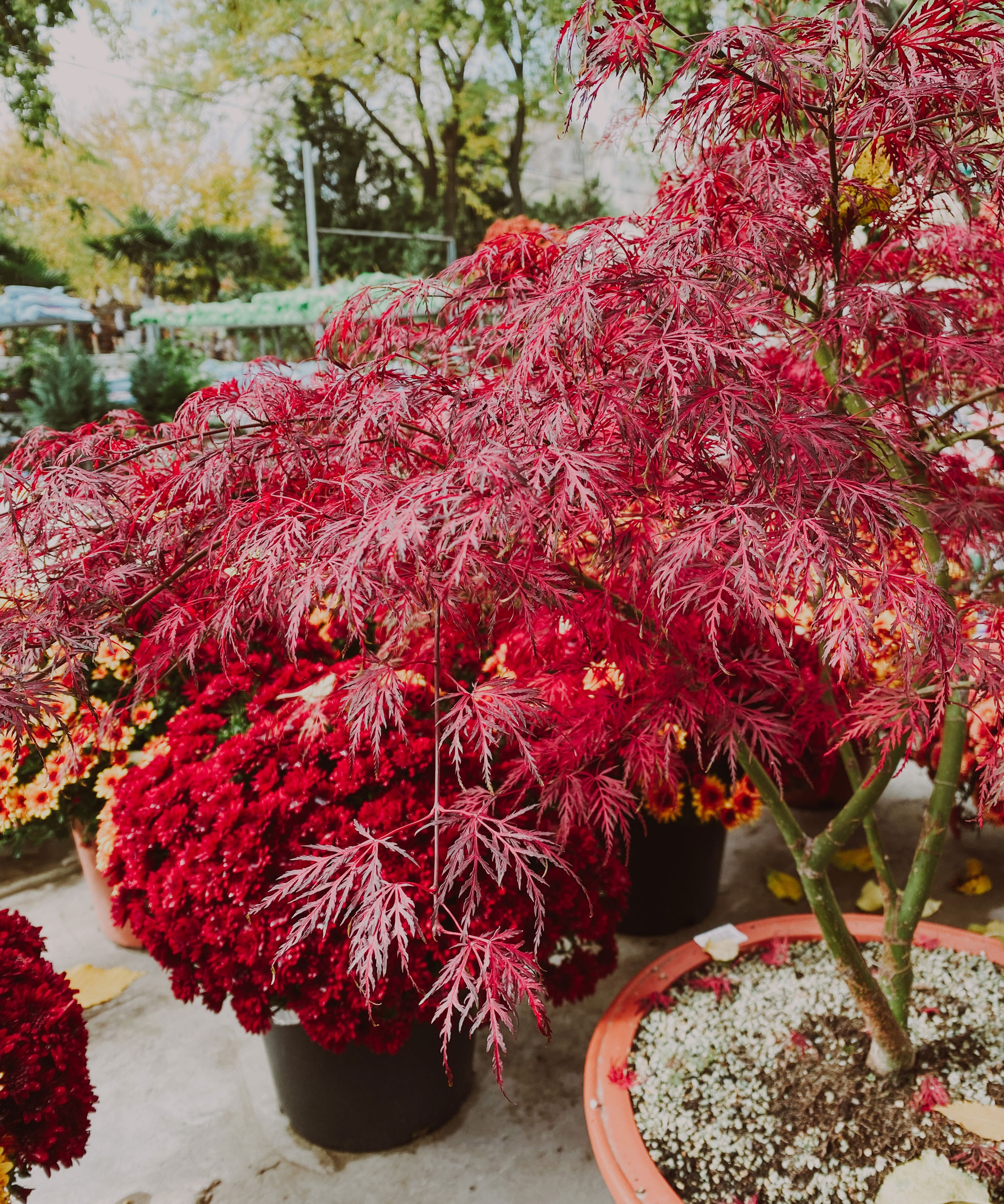
While many ornamental trees require a full sun location to put on a show, Japanese maples are not among them. The best garden placement for these small maples is a site with sun in the morning but afternoon shade. Dappled sun is another option. If you have to choose between full sun and full shade, go for shade. Several cultivars thrive in full shade, especially if you live in a warm climate, but few accept afternoon sun.
If you have the option, you can plant your Japanese maple in a pot, allowing you to move it around if you have issues with sunshine. Alternatively, you could plant near a fence, wall or screen such as the GXK Home Privacy Screen from Walmart to ensure that the tree has controlled access to light only at certain times of day. Growing Japanese maples in fall is much easier once you are happy with the plant site.
That said, you’ll get a better fall color if your tree gets some sun every day. Although Japanese maples generally prefer dappled light locations, the amount of sunshine available in autumn will impact the intensity of fall color. The sunnier the autumn days and the more sun that touches the leaves, the more chlorophyll is destroyed, and the more anthocyanin is produced. If the fall days are cloudy, colors are muted, even dull.
3. DO Water and Mulch
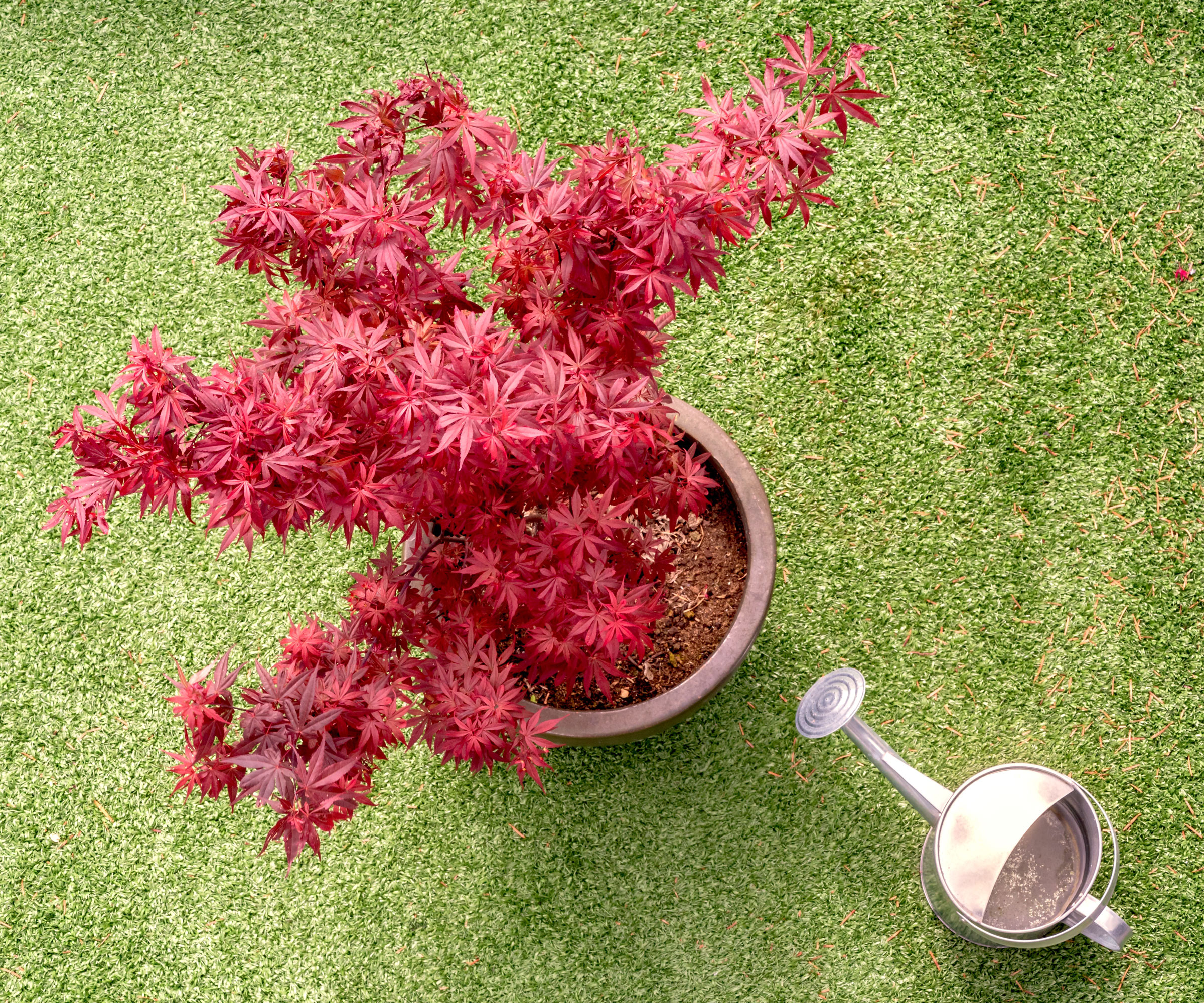
While Japanese maples require well-draining soil to thrive, that doesn’t mean they don’t also need moist soil. Regular irrigation is critical to their health and happiness, and they are happiest where the soil is moist. Drought stress will impact the tree’s fall colors. If in doubt, check your soil moisture levels with a soil moisture meter, like the Raintrip 4-in-1 Soil Moisture Meter from Amazon, which also tests for nutrient levels and helps you check for soil pH, as ideally this should be slightly acidic.
Water these trees frequently until they establish a root system. At that point, water every week unless there is ample rain. The soil should be moist but never soggy. As fall approaches, you can encourage fall color by gradually cutting back the water you are giving the tree. It’s also wise to mulch around the base of your Japanese maple to retain moisture. To help regulate moisture levels, try layering the soil with organic mulch such as Back to the Roots Organic Mulch, available from Amazon. This also helps to stabilize the soil temperature, all the better for fall foliage displays.
4. DO Treat Pests and Diseases Quickly
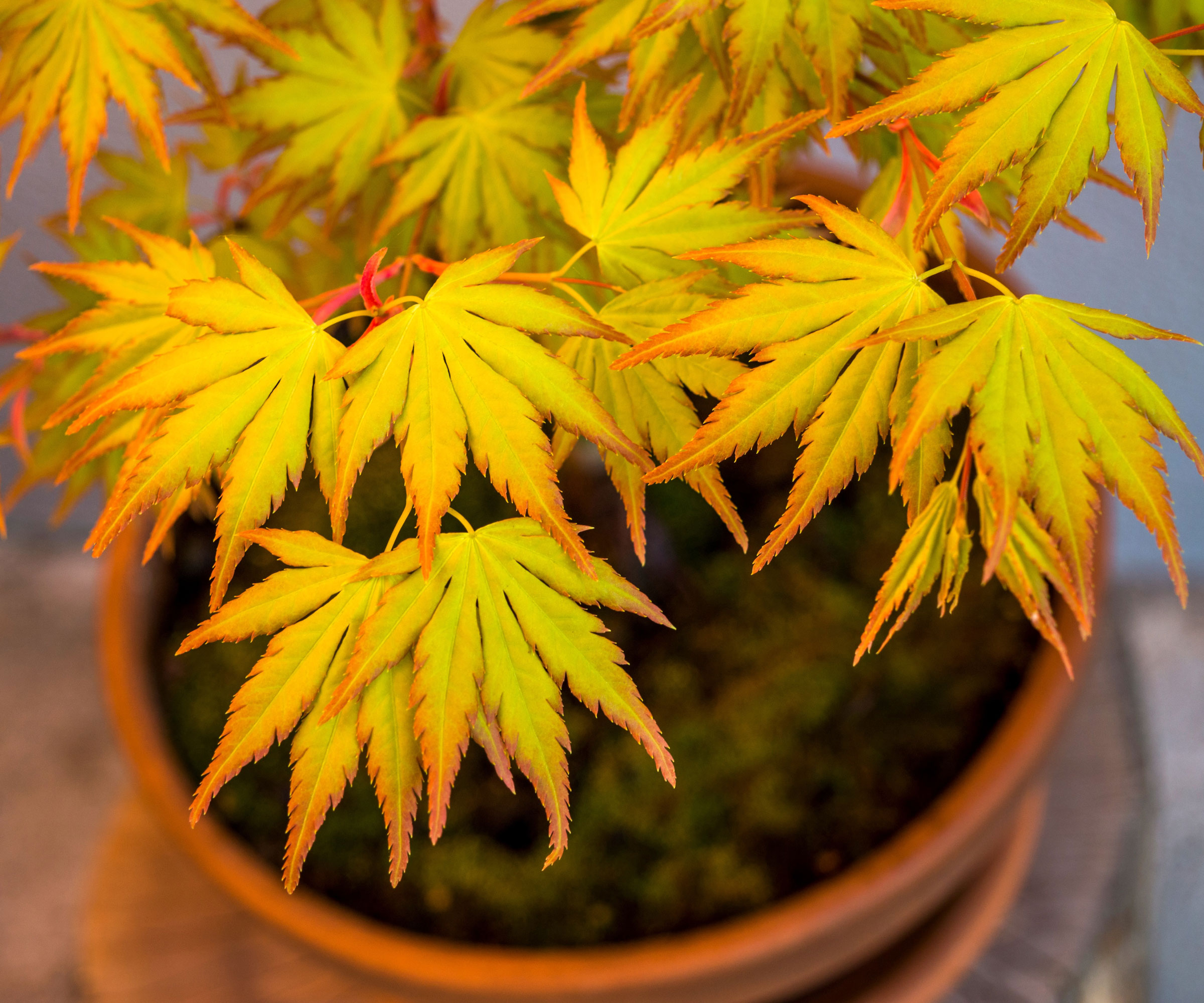
It’s rare to find a tree species that isn’t impacted by pests and diseases. Japanese maples have their fair share, including sap-sucking insects (such as aphids) and fungal diseases (like anthracnose). These can impact both the health of the tree and the fall display. So, watch for them and treat them early. A tree given a proper site, rich soil and adequate sunlight are likely to shrug off small issues, but if the tree is stressed it may not have the energy to both fight off problems and offer brilliant fall colors.
If you suspect you might be dealing with aphids or scale insects, take action quickly. Distortions in leaf growth or a brown leaf color (rather than healthy fall tone) tone could indicate issues. Apply a neem oil solution and horticultural soap spray, or a dedicated eco-friendly ready-to-use agent such as Bonide Captain Jack’s Neem Max Spray from Amazon.
5. DON’T Fertilize in Fall
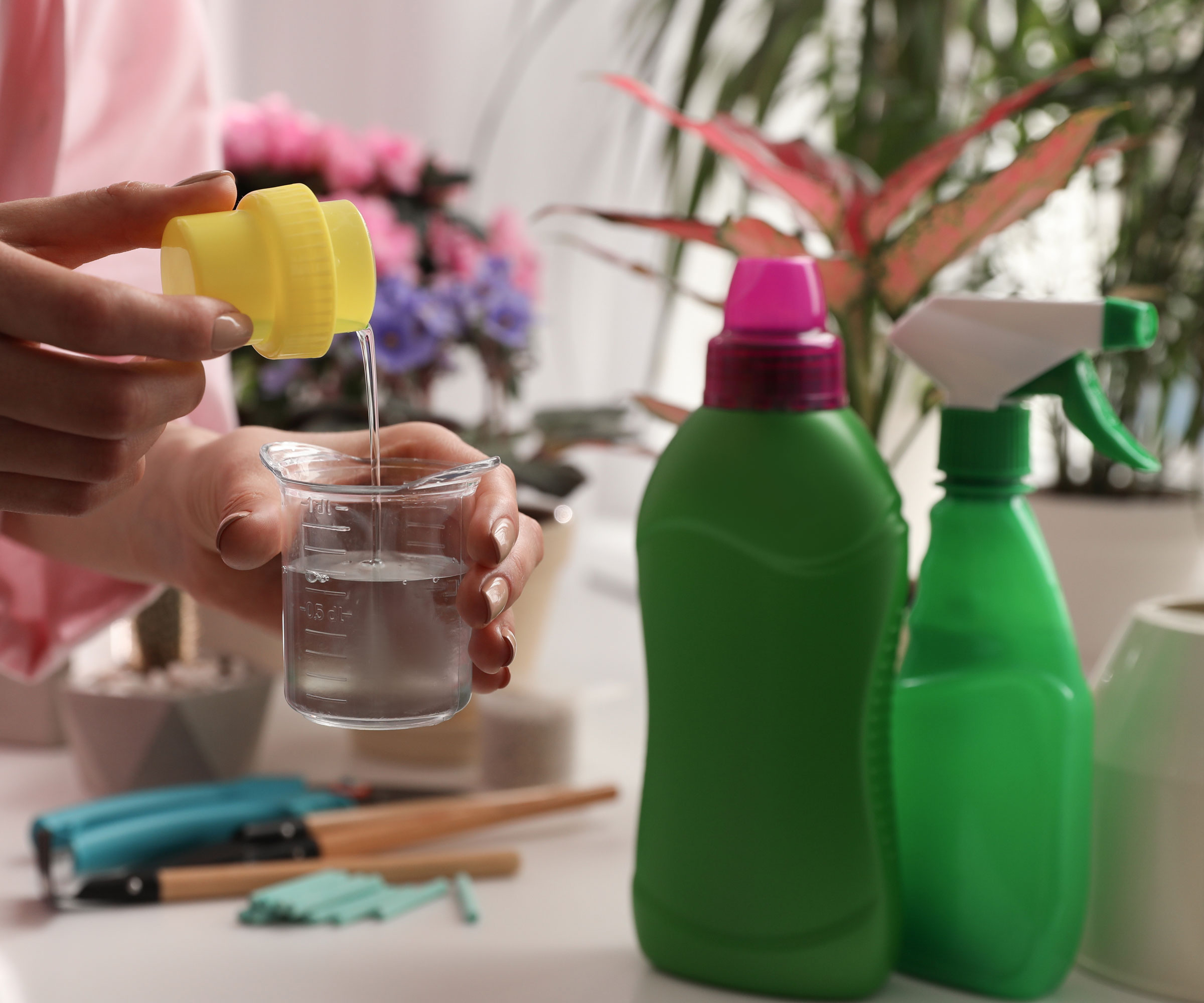
Japanese maples like rich soil with ample organic material. If they get this, fertilizer is optional. But if you do fertilize your tree, the best time to do it is in spring, making sure you cut the recommended dose in half. Whatever you do, don’t be tempted to give your tree ‘a bit extra’ right now in the hopes of boosting color or giving it a last-minute top-up. Doing this in the fall can backfire horribly. It won’t give you more color – and it could end up compromising the health and vitality of your tree.
If you give the tree fertilizer in autumn – especially nitrogen-heavy fertilizer – you are encouraging the tree to put out new green leaves, which means less fiery fall color. In addition, fertilizing a Japanese maple in fall can damage the tree. It causes new, tender growth at a time the maple should be preparing for winter. That fresh growth will be tender and won’t have enough time to acclimate before the cold arrives. In extreme cases, this could lead to shock or dieback. So, save your feed for spring.
6. DON’T Prune in Fall
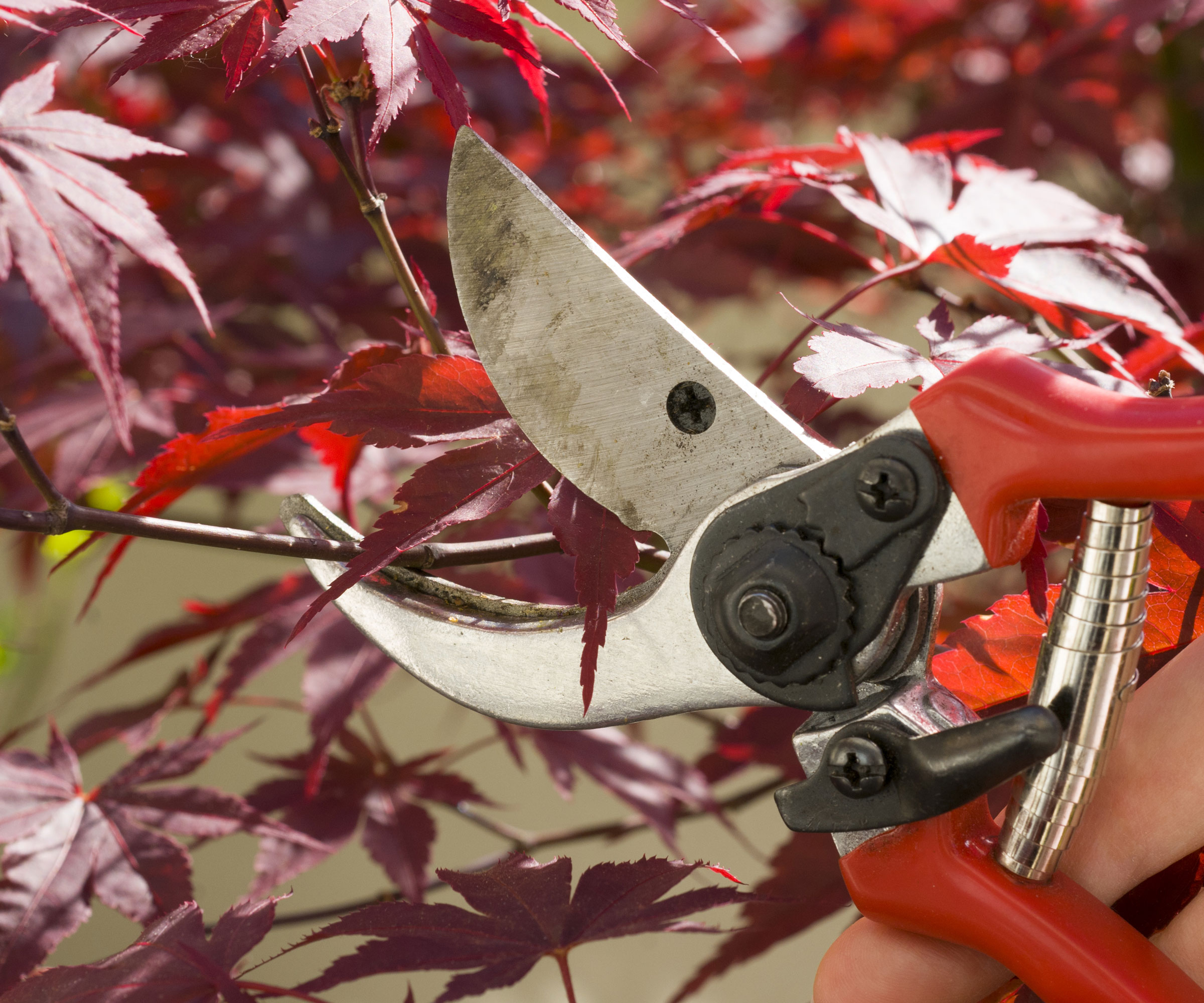
It makes sense that heavy pruning of a Japanese maple’s canopy in fall will reduce the fiery foliage. If you cut off branches and leaves, you’ll have fewer yellow, orange, red, or purple leaves! However, there are other issues with pruning your tree while it is still actively growing. Making cuts whilst the tree is in full splendor could cause bleeding sap, exposing the unhealed wounds to disease. The cooler temperatures affect the tree’s ability to close its own wounds efficiently. So any cuts could take longer to heal over, which can exacerbate any potential risks from pests or diseases.
While it’s OK to take off the odd dead, damaged or diseased branch in autumn, you should save substantive pruning for when the tree is dormant. So hold fire and wait until late winter, before the bud break of early spring. Even then, there’s no need for major cuts. Work with the natural shape of the tree. Just make cuts to remove dead branches, improve airflow, and promote new growth.
Of course, there’s nothing to stop you updating your pruning tools in fall. Make sure you have a great set of bypass pruners like Felco’s F2 Pruning Shears with Precision Bypass Blade from Amazon, as well as a saw or loppers for thick branches.
Need more ideas for growing inspiration, timely gardening jobs and seasonal expert advice delivered straight to your inbox? Sign up for the free Gardening Know How Newsletter!

Teo Spengler is a master gardener and a docent at the San Francisco Botanical Garden, where she hosts public tours. She has studied horticulture and written about nature, trees, plants, and gardening for more than two decades, following a career as an attorney and legal writer. Her extended family includes some 30 houseplants and hundreds of outdoor plants, including 250 trees, which are her main passion. Spengler currently splits her life between San Francisco and the French Basque Country, though she was raised in Alaska, giving her experience of gardening in a range of climates.
- Janey GouldingContent Editor
- Amy DraissDigital Community Manager